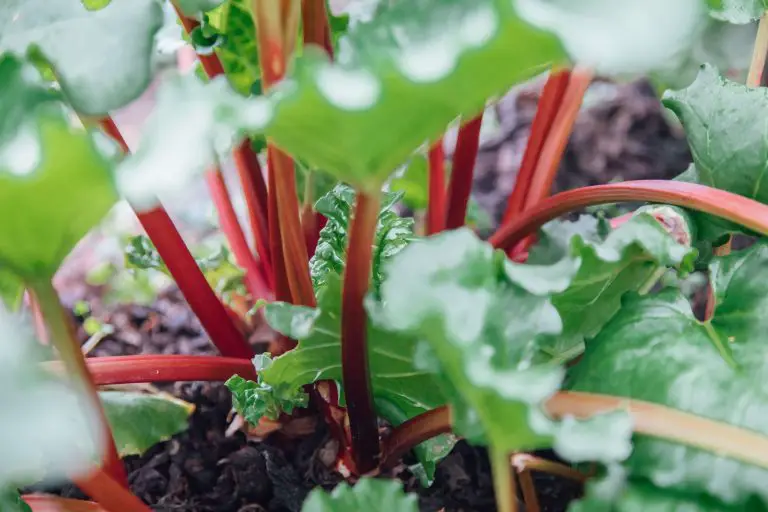How To Harvest Dill Without Killing The Plant [Exact Steps]
Do you wish to know how to harvest dill without killing the plant?
Although dill is one of the top favorite aromatic herbs around, something about the feathery leaves and fragile-looking stem kept me away. I was worried that once harvesting season comes around, I would not be able to keep it alive!
Fortunately, once I started tinkering around with planting dill – I managed to learn how to do it. I know that if I can do it, this means that you can too!
In this article, we will go over all the steps you need to take to figure out how to harvest dill without killing the plant. This includes growing dill, harvesting dill, storing dill, and extra tips to make the process look so easy!
Summary
- No Kill Dill Harvesting Methods
- What Is Dill
- Instructions For Growing Dill
- Extra Tips For Harvesting Dill
- Delicious Dill Throughout The Season
- How To Prune Dill For A Better Harvest
- 4 Good Reasons to Harvest Dill Regularly
- Preparing The Final Dill Harvest
- Storing Your Dill Harvest
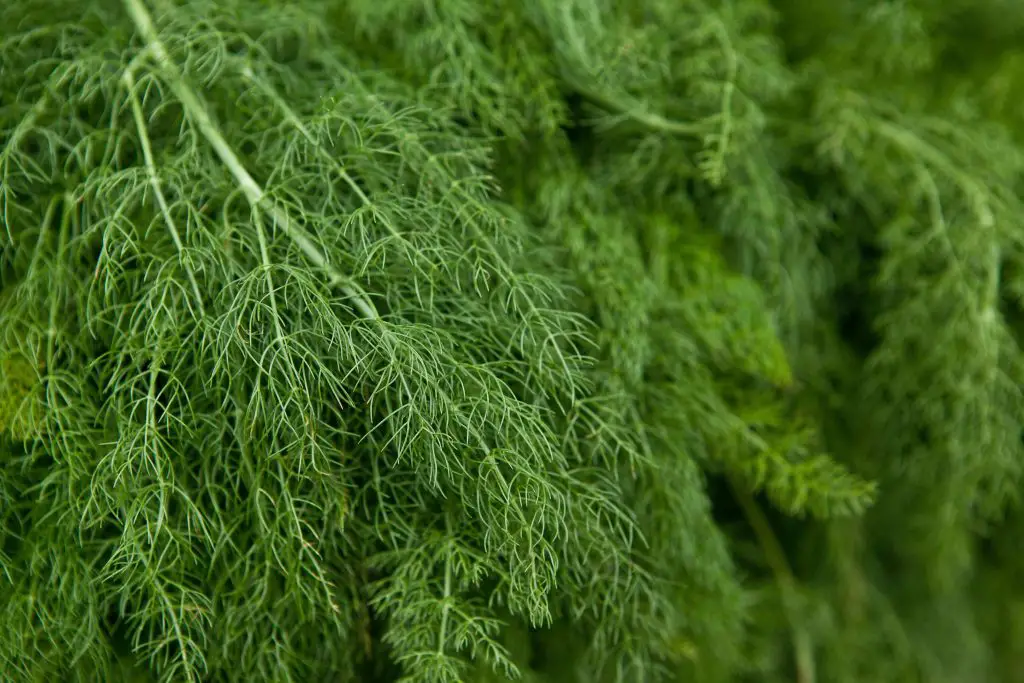
Affiliate Link Disclosure
Some of the links on here are affiliate links and I may earn if you click on them, AT NO EXTRA cost to you. Hope you find the information here useful! Thanks.
Related Posts
- How To Harvest Parsley Without Killing The Plant -Exact Steps! [2023]
- How To Harvest Sage Without Killing The Plant & What To Avoid! [2023]
- How To Harvest Chives Without Killing The Plant [Exact Steps]
- How To Harvest Cabbage- The RIGHT Way!
- What Not To Plant With Kale: An Easy Guide 2023
- How To Pick Mint Leaves Without Killing Plant -Exact Steps! [2023]
- How To Harvest Rosemary Without Killing The Plant? [Personal Experience!]
- How To Harvest Oregano Without Killing The Plant? [Personal Experience!]
No Kill Dill Harvesting Methods
So how do you harvest dill without killing the plant? If you’re as excited as I am, let’s jump straight into the methods of harvesting dill correctly!
1. Snipping Dill
Let me tell you the top tip that most dill harvesters know – never snip more than ⅓ of the dill plant!
It took me 3 tries (on the same plant, thankfully) to figure out that you should never snip off more than half of the plant.
This helps the plant keep growing, for more dill harvests.
Another rule of thumb is to harvest your plant only when there are at least 5 whole leaves. This takes about 6 to 8 weeks after you plant the dill seeds.
Although you can use regular scissors when you harvest dill leaves, those who prefer a neat job can work with small garden shears.
It keeps the edges sharp for a fresh round of dill. I prefer to use this pair from Amazon because the size is perfect to manage around the dill leaves!
2. Pinching Dill
Let’s face it – we’ve all done the quick and convenient method of pinching plant leaves when we’re cooking and in a hurry.You can pinch and use your finger to “slice” off dill.
It works for younger and softer leaves, but please don’t try it on the older ones!
Take it from me that it will just hurt your fingers.
Although I still recommend using a pair of scissors to snip off the leaves, this method is much better than just plucking or breaking off the leaves by force. It makes the plant damaged and future harvests may be at stake!
3. Cutting Dill Leaf Tips Only
If you’ve recently harvested your dill plant and are in a hurry to add some flavor to your cooking, it is perfectly acceptable to just cut the dill leaf tips. Make sure that you just snip off a few, so that the plant continues to thrive well. This is how to pick dill so it keeps growing.
Some of you ask if this would make the dill plant bushier. Let me assure you, it does not! If you wish to do that, snip the entire leaf (with its stem) to promote bushy growth.
4. Large-Scale Harvesting
Sometimes, I harvest dill in larger amounts to host dinner parties or pack it as gifts during Thanksgiving. How do you harvest dill without killing the plant?
The answer is to keep to the same principles!
Never harvest more than ⅓ of each dill leaf.
It might be helpful to have more than one dill plant for this purpose.
Special tip: Dill’s flavor is at its best right before it flowers! This means that you can keep an eye out to harvest it when buds are beginning to form on the dill plant.

Extra Tips For Harvesting Dill
Here are some additional tips on how to harvest dill without killing the plant:
1. Monitor Your Dill’s Growth
Always snip the oldest leaves first (but never the full stalk! This damages chances for growth). Always choose the outer leaves before harvesting the inner ones.
2. Water Before Harvesting
If you’re wondering how to harvest dill, this extra tip is gold. Always make sure that your plant is well-watered in the days leading up to harvest. This keeps the stalk firm and ready for recovery after you snip its leaves.
3. Harvest Small Batches
Unless there is a great need for large harvests, always harvest dill in small batches. Follow the ⅓ rule to leave the dill plant with enough leaves to continue growing. This is how you harvest dill throughout the year.
4. Trim Dill Before It Flowers
Dill is at its best if the plant is kept trimmed before the flowering stage. This is because it spends more energy on flowering which makes the leaves less flavorful and healthy.
If you wish to sow a fresh batch of dill crop, you can learn how to harvest dill seed by plucking the flower head and keeping it in a bag until it is dry.
How to trim dill plants? Use a sharp pair of scissors to snip off flowering buds when you see them growing. Learn how to trim dill before they move into the seeding stage.
5. Avoid Knives
Always opt for a sharp pair of scissors (you can use regular paper scissors too!) when you work with dill. Although you can get away with using a knife for other plants, dill stems are too delicate for the sawing motion of using knives. It can cause extensive, irreparable damage.
6. Harvest At The Right Time
When is dill ready to harvest? At least 8 weeks after planting the dill seeds. If you harvest too soon, you may stop the plant from growing up to its best. Keep your patience, guys!
7. Give Dill Enriched Soil
Dill are heavy feeders and rely on a constant supply of water, sunlight, and nutrients for the best growth. If you want your dill to grow continuously, ensure that the soil is enriched.
8. Plant Dill Weekly
Sow dill seeds weekly in batches if you are looking forward to harvesting them continuously at harvest time! This is a tip that I use to ensure that my supply of dill never runs out.

What Is Dill?
Dill is a slender and feathering herb and spice that can be found anywhere in the world. It is one of the more commonly used herbs and spices for cooking, especially in Asian and European cultures.
Extremely fragrant and holding a distinct taste, you can choose to cook it, stew it, blend it, or even just make a dish look pretty. It is so well-known that remnants of it were even found in Egyptian Pharaoh Amenhotep II’s 3,400-year-old tomb!
Other than that, it is also known as dill weed, which is aptly named because it can flourish well in most situations provided that its basic needs are met. An annual herbaceous plant, it can grow up to 60 cm (24 inches) tall. It is rich in nutrients such as Vitamins C and A and manganese.
Instructions For Growing Dill
The best time to sow dill seeds is when the cold and frost are over! Dill grows best in sunny climates despite being an annual plant (they die at the end of the year). This will set the right tone if you wish to know how to harvest fresh dill without killing the plant.
A sustainable way to keep having dill on hand is by planting them in batches all through mid-summer. Get your dill seeds in small batches here.
| Dill Requirements | Signs Of Poor Nutrient | Solution |
| Water | Weak StalksDying Plants | Water/mist dill regularly |
| Soil (Substrate) | Poor Growth | Well-drained, suitable organic potting mix |
| Light | Weak Stalks Yellow Leaves | 4 to 6 hours of sun each day |
| Nutrients | Poor GrowthChlorosis | Use organic fertilizer |
1. Water Requirements
Dills are thirsty plants who love their water! Keep the soil consistently moist by watering it regularly or misting water upon its leaves. Guard against these two symptoms:
- Weak stalks: If the plant is needing water, the first sign is having weak stalks. Dill needs water to maintain its firmness and overall shape.
- Dying plants: This occurs more readily in sunny climates when dill plants lose water and freshness.
2. Suitable Substrate
Keep loose loam soil with pH levels of 6.5 to 7 to help your dill plant harvest well. You can include perlite in the soil as well! I find that my dill plants tend to grow best in raised garden beds.
For those who prefer container gardening, use a well-drained, suitable potting mix. I ordered mine here.
3. Light Requirements
It is relatively easy to help your dill plant get enough soon because the best time to plant seeds is after the cold season. Dill plants need at least 4 hours of full sun each day, with the optimal amount of time at 6 hours each day.
If your plant is not getting enough sun, it will show in:
- Weak stalks: Without enough energy to stay firm, your dill plant will have stalks that are weak. It may also appear taller because it is leaning towards the direction of the sun.
- Yellow leaves: A typical sign of lacking sunlight in plants. This is caused by the loss of chlorophyll (which is needed to help your plant stay green!).
4. Nutrient Requirements
Dill thrives on feeding off a rich soil that is full of nutrients. You can choose to go with an organic fertilizer consisting of rotted manure, humus, and worm castings. Due to time constraints, I prefer to opt for this organic fertilizer that works just the same!
Signs that your plants need more nutrients:
- Poor growth: Provided that your dill plant is getting enough sunlight and water, opt for nutrients or micronutrients such as nitrogen, potassium, and phosphorus.
- Chlorosis: This happens when your plants lose their green color and appear weak.
5. Companion Planting
I’d like to share this relatively new gardening technique where different plants are planted next to each other to maximize benefits such as repelling insects and providing nutrients, shade, or support. Dill can be planted with brassica (cabbage family), asparagus, corn, lettuce, and onions.
I’m still experimenting with a pairing between dill and tomatoes (it may also attract some hornworms) to see if it improves my tomato crops!
How To Prune Dill
Although it is never necessary to prune your dill plant, it will help to make them bushier with more leaves. This step also stops the flowering process, which makes dill less flavorful and healthy. I like to think of pruning as smaller harvests that will give me extra dill!
To prune dill, follow these steps:
- Look for the correct location: Find the spot where stalks are connected to the main stem
- Use correct tools: Use a pair of scissors (regular paper scissors can also do the trick) to snip the stalk
If you wish to plant and harvest dill for its leaves, pruning it regularly will give you the best flavor and condition! When the plant flowers, it will be spending more energy on the flowering process. This makes the dill leaves less flavorful and bitter.
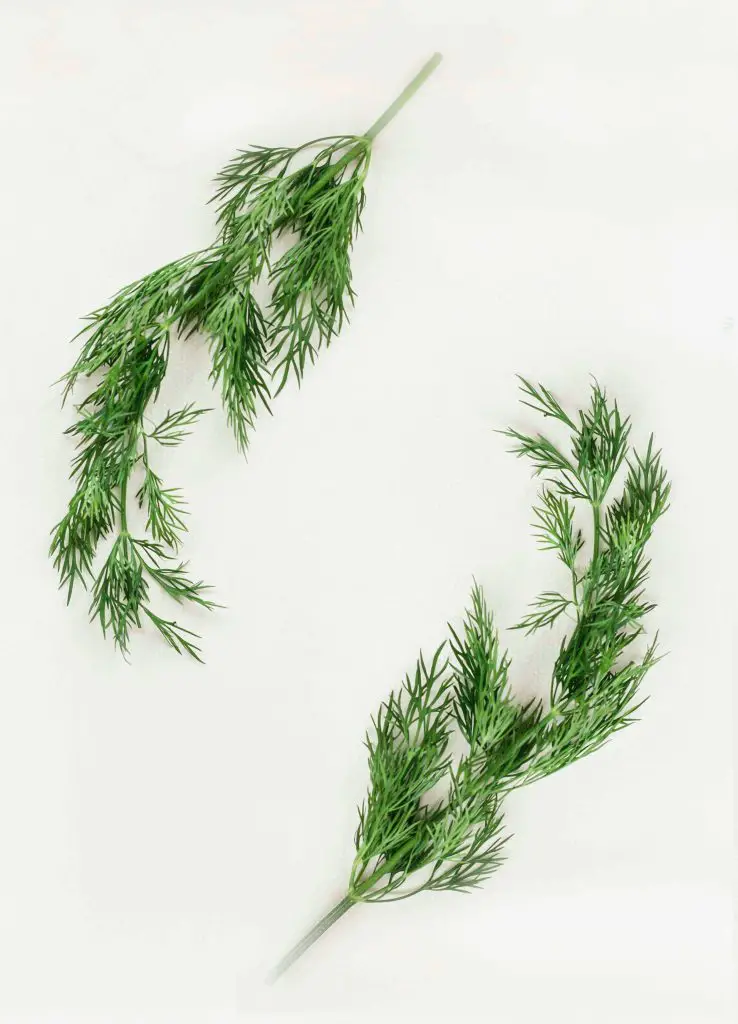
4 Reasons To Harvest Dill Regularly
Now that we know that harvesting dill is not much hard work, let me tell you the reasons why I do it regularly.
1. Longer Dill Harvesting Season
I like to think of myself as a prudent lady. So, if I learn a method of prolonging my plant’s life (hence, having more dill harvests!) I am going to dig right in!
Dill is the kind of plant that will die after it flowers. Trimming dill and pruning it now and then will prolong its life until the end of the year. I want to keep the dill coming hard and fresh, and therefore I choose to harvest my dill regularly.
2. Bushier Dill Plant
What I learned from pruning my dill plant regularly was that it grew back stronger, bushier, and healthier. To have thick dill growth, pruning is the way to go.
Dill plants are naturally tall and thin, and therefore I like to keep the growth sideways to have fat and thick foliage. Don’t worry if your plant looks thinner in the short term, they pick up right after with the correct nutrients!
3. High-Quality Dill
Make no mistake – keep your dills flower-free. That is the key tip to producing many harvests of high-quality dill. I once made the silly mistake of keeping the flowers during a busy period and was sorry to see my mighty dill plant lose its vitality soon after.
4. Dill For Days!
Harvesting regularly means that you have plenty of dill herbs to spice up your meals, sell them in small batches, or even share the love with your neighbors!
The flavorful and beautiful dill that you harvest will keep your family happy, and your neighbors close. Trust me on that one.
The Final Dill Harvest
At the end of the season, I usually harvest the entire plant. This is because dills are annual plants that eventually die at the end of the year. This is also the time when I aim to maximize my storage of dill for the longest possible time (more tips at the bottom!).
Dills stop growing due to two main reasons:
- Frost: Dills freeze if exposed to the chill. Their fragile leaves ice off, leaving the plants inedible. This is why dill is only planted after the cold season ends.
- Heat: Dill grows best around 70° F (21° C) and will stop growing if it is too hot.
Although it is hard to predict when this will happen, I like to start getting ready by first snipping from the outer leaves when the weather turns. If the weather persists, I then harvest the rest of the dill all at once.
Keep an eye on the flowering stage. To harvest the dill all at once, snip the plant stalks when the flavor is in full bloom (tiny flowering buds on the plant). Remember to keep some dill for re-seeding next year!
Storing Your Dill Harvest
Now that you know how to harvest and prune dill, I bet you are thinking about how to store that dill harvest you brought in. There are a few methods to go about, depending on how long you wish to store dill.
1. Storing Fresh Dill
After learning how to cut fresh dill (snip it with scissors!), it makes sense to keep it fresh as long as possible. Fresh dill is the most flavorful, and you can help to extend its freshness by storing it in the refrigerator.
Follow these steps on how to store dill:
- Wrap dill in a damp paper towel
- Seal it in a proper storage plastic bag
- Store it in the “crisper” or fresh drawer in the fridge
- Eat it as soon as possible
Do not store it this way for too long, because the dill leaves will wilt after a couple of days.
2. How To Dry Dill
You need to learn how to dry dill if you intend to keep them for the longest possible time. The good news is that dill leaves, stalks, and even seeds can be dried and preserved.
Follow these steps on how to dry dill:
- Cut off whole sprigs (stalks) of dill
- Wash off any debris (be gentle!)
- Place on a towel to dry (takes up to 2 hours)
- Tie the sprigs together
- Hang them upside down in bundles
- Store when leaves are dried and crumbly
Make sure to do this in a dark and warm room with a good supply of air. They tend to dry out well unless you live in a humid climate, of which you can use a dehumidifier with the lowest settings.
3. How To Freeze Dill
You can freeze dill but take note that most of the flavor will be lost after it thaws. If you wish to proceed with freezing, do it as soon as you can after harvest.
Follow these steps on how to freeze dill:
- Place the dill in freezing containers (bags, plastic containers, even ice trays)
- Store in the freezer
- To use, snip off as much as you need
My personal favorite is to dry the dill as I think they keep the longest without too much compromise on its flavor. Which is your favorite way of storing dill?
FAQs on How To Harvest Dill Without Killing The Plant
How Do You Pick Dill Off Plants?
Snip the stems of the leaves where they branch to the main stem with a pair of scissors. Do this by hand for plant stems that are young and tender by pinching them between your fingernail and finger bed.
Can You Harvest Dill Multiple Times?
Dill can be harvested several times as it keeps growing. Unlike carrots, which can only be harvested once, dill will grow back quickly after you harvest it. Just make sure to harvest it with a small scissors, and trim at most ⅓ of the plant stalk.
By now, you should know how to harvest dill without killing the plant. It is easy to grow at home and enhances the taste of almost any dish that you can cook at home. Its nutritional benefits and flavors make it a desirable herb plant to grow in your garden.
Dill is an annual plant that you can grow throughout the year, giving you many harvests before the season ends. Keep the plant happy, and I ensure that you and your family will be happy throughout the season!
What are some of your tips for harvesting dill? Share it with me in the comments!
Related Posts:
- How To Harvest Rosemary [The RIGHT Way!]
- How To Harvest Kale Without Killing The Plant [What to Avoid!] 2023
- How To Harvest Swiss Chard Without Killing The Plant [Exact Steps!]
- How To Harvest Spinach Without Killing The Plant: Exact Steps!
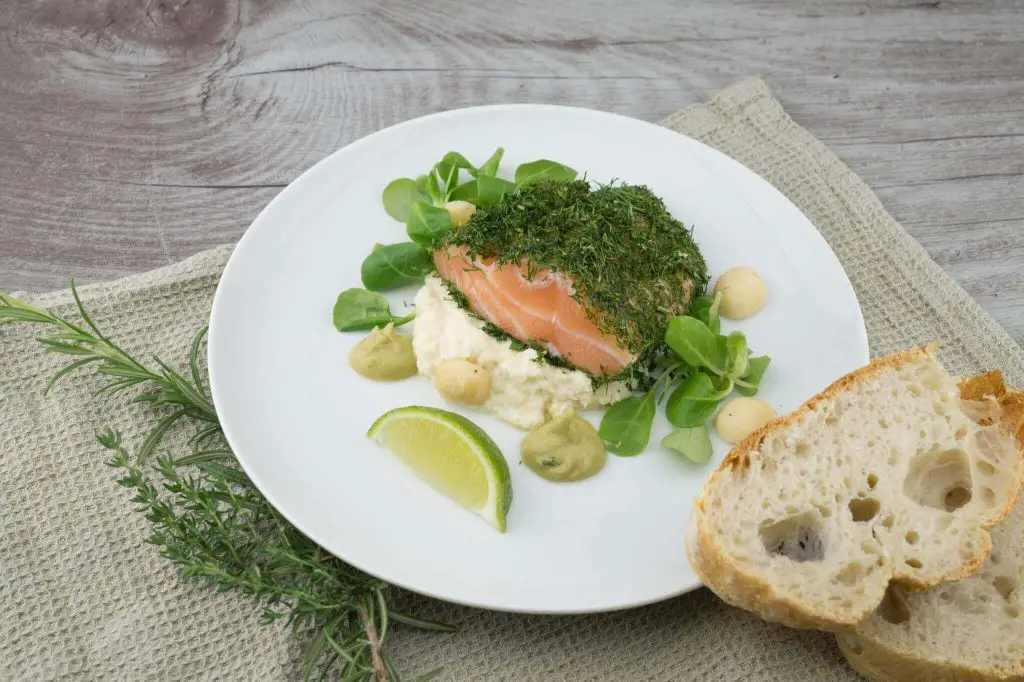





![How To Dry Willow Branches The RIGHT Way [2022 Guide]](https://aboveandbeyondgardening.com/wp-content/uploads/2022/08/How-To-Dry-Willow-Branches-3-768x432.jpg)
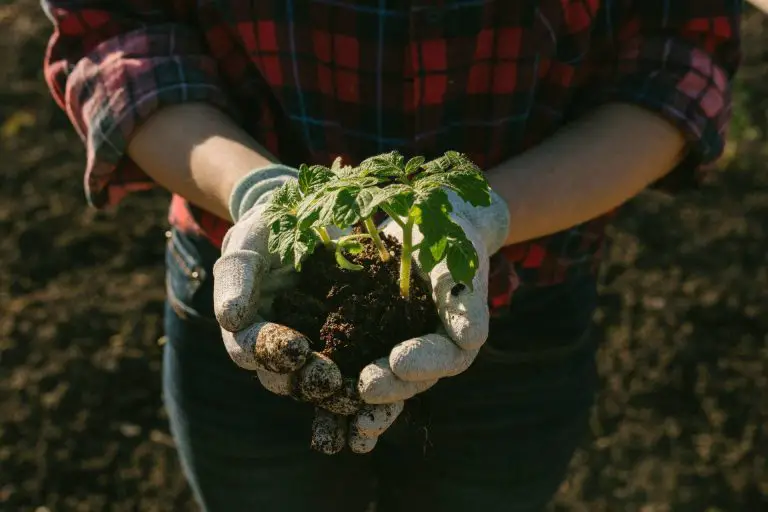
![How To Harvest Oregano Without Killing The Plant? [Personal Experience!]](https://aboveandbeyondgardening.com/wp-content/uploads/2022/10/How-To-Harvest-Oregano-Without-Killing-The-Plant-7-768x442.jpg)
![13 Companion Plants For Bok Choy-Best & Worst![2023]](https://aboveandbeyondgardening.com/wp-content/uploads/2022/10/Companion-Plant-For-Bok-Choy-8-768x511.jpg)
![How To Harvest Cilantro Without Killing The Plant?[The Best Way!]](https://aboveandbeyondgardening.com/wp-content/uploads/2022/10/how-to-harvest-cilantro-without-killing-the-plant-6-768x512.jpg)
